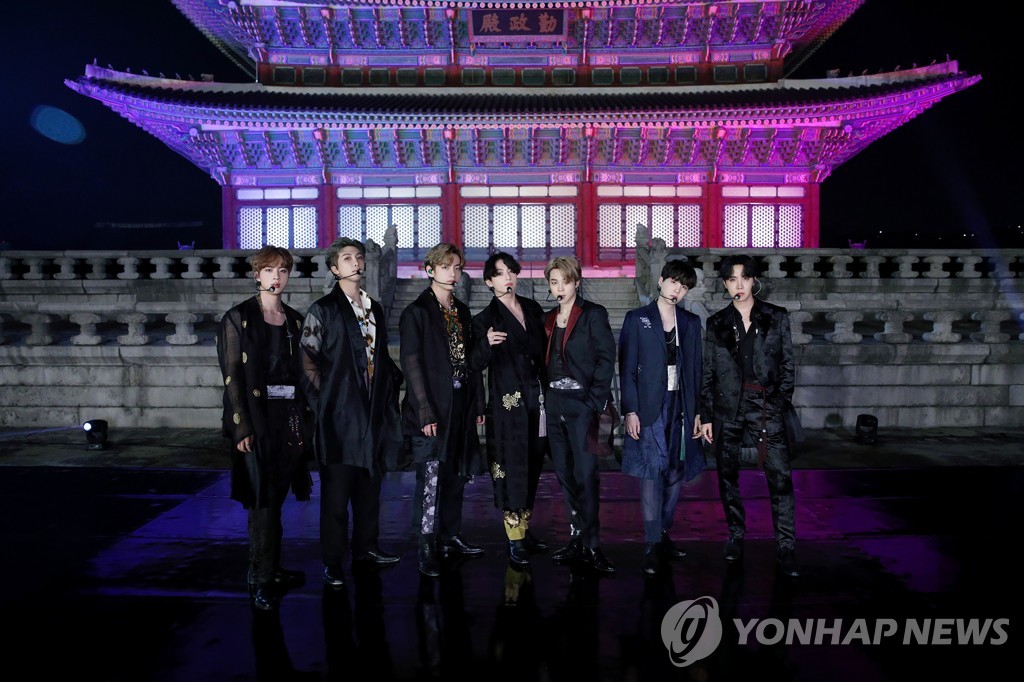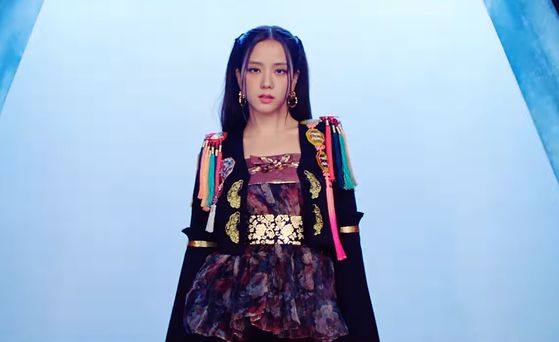In 2020, Korean idol group BTS made an appearance on The Tonight Show with Jimmy Fallon and took to the stage, framed by the night view of Gyeongbokgung, to perform their 2018 hit song Idol. A Korean group performing on the most popular talk show in America is a feat in itself, however, even more notable was the group’s performance outfit. BTS donned a set of hanbok, the traditional garment of Korea, designed by Cho Young-gi. To non-Koreans, this may seem like a purely aesthetic decision, but BTS wearing hanbok while performing on a global stage is an extremely powerful affirmation of their cultural heritage. By looking at examples like BTS’s performance, we can understand the importance hanbok has to Korean culture and the continued relevance it has as it evolves with Korean society.

BTS posing for a photo in front of Geunjeongjeon Hall of Gyeongbok Palace in Seoul, South Korea, where the band filmed a performance for the “BTS Week” special on NBC’s “The Tonight Show Starring Jimmy Fallon” in the United States
History
The general silhouette and composition of hanbok is the result of a long and complex history and influences. The ensemble we see today is the result of influence from a variety of sources in East Asia, notably Chinese court dress and Mongolian and Manchurian clothing. These influences were incorporated into the native dress of the peninsula, making the end result noticeably distinct from other East Asian dress and giving it strong ties to Korean culture and history. Hanbok’s first appearance in history dates back to the Three Kingdoms period. Baekje, Silla, and Goguryeo all had their specific forms of hanbok, with minor details differentiating them. Even in its earliest incarnation, the hanbok contained all its most iconic pieces: jeogori, durumagi, baji, chima, and heoriddi. Following the unification of the Three Kingdoms into Unified Silla and Balhae and eventually Goryeo, one major change was the shortening of the jeogori from longer robe-like silhouette to the shorter jacket silhouette. Along with this change came the iconic otgoreum, a ribbon attached to the jeogori that is tied in a loose knot to hold the jacket closed.The Joseon hanbok also has its own details specific to that period in time. One major change comes from another change to jeogori. From the cropped jacket of Goryeo, the sleeves lengthened considerably and the jacket once again lengthened along the torso. However both these changes started to reverse and the jacket returned to a shorter length in the early 17th century.

Singer Han Bom and Son Bin Ah wearing hanbok
Modern Wear
The “traditional-style” hanbok we see today is a combination of a variety of previous styles, but it is in general most similar to the Joseon hanbok. The jeogori is relatively shorter and tighter with an otgoreum on the front, and the skirt is shorter to allow for more mobility. It is mostly worn on special holidays, such as chuseok or seollal, or when visiting historical sites like Gyeongbokgung. However, there is still a large population of people who wear the hanbok for formal events like weddings or business events.
Alterations
Hanbok has also been changed to adapt to modern silhouettes and tastes, allowing people to incorporate it into their everyday wardrobe. This style is referred to by a few names, such as shin hanbok or modern daily hanbok, and it comes in many different forms. Shin hanbok comes in a variety of styles, each emphasizing different elements of a traditional hanbok ensemble. A common interpretation one can see, even just walking around Seoul, is a durumagi coat. The durumagi already resembles the style of coat worn by many Koreans, so it is a natural transition to manufacture it in thicker, winter textiles. Similarly, skirt and blouse sets take inspiration from the chima and jeogori, but are cut in a way to act as everyday wear using modern patterns and fabrics. There are also suits and professional wear that use traditional Korean textiles and invoke the silhouette of traditional hanbok.
Similar to BTS, Korean idol group Blackpink also wore a heavily modified version of hanbok on the The Tonight Show. Their hanbok was heavily edited to fit more trendy styles. For example, the member Jisoo’s chima is hiked up above her waist, similar to the traditional silhouette of female hanbok, but its length is shortened to her thighs. Similarly, she is wearing what we could consider a jeogori, but its shoulders are more pronounced and the chest is left exposed, making it appear like a cropped blazer. It is also decorated with norigae, a charm usually attached to the jeogori, all over the shoulders, mimicking a military coat’s flashy epaulettes.

Blackpink Jisoo wearing hanbok in How You Like That M/V
Hanbok’s Legacy
Hanbok’s legacy is ever changing, and its recent popularity is reflective of a new revival of national pride among younger generations. Following Hallyu bringing Korean pop culture to the global stage, many younger Koreans are taking renewed interest in their traditional culture. Icons like BTS and Blackpink, who use hanbok as a way of reaffirming their cultural heritage on a global stage, are inspiring younger Koreans to rediscover the inherent value hanbok has to Korean culture and the potential it has in their individual lives.
At the same time, we see hanbok’s adoption by younger generations being followed by a reinterpretation of the ideals of hanbok. Hanbok originally has a very boxy, wide silhouette, not necessarily showing off one’s natural figure. Younger women are now embracing this characteristic with shin hanbok, as the wider fit allows for an androgynous look. As more young designers reimagine and adapt the hanbok, we will see it presented in more varied and transgressive ways. Despite the long history of hanbok, its future is only getting brighter.
Written by: Curtis Feldner
Originally from Atlanta, Georgia, USA. Currently a 4th Year undergraduate pursuing a BS in Educational Studies at University of Wisconsin-Madison. Exchange student at Korea University and intern at VANK (Voluntary Agency Network of Korea)